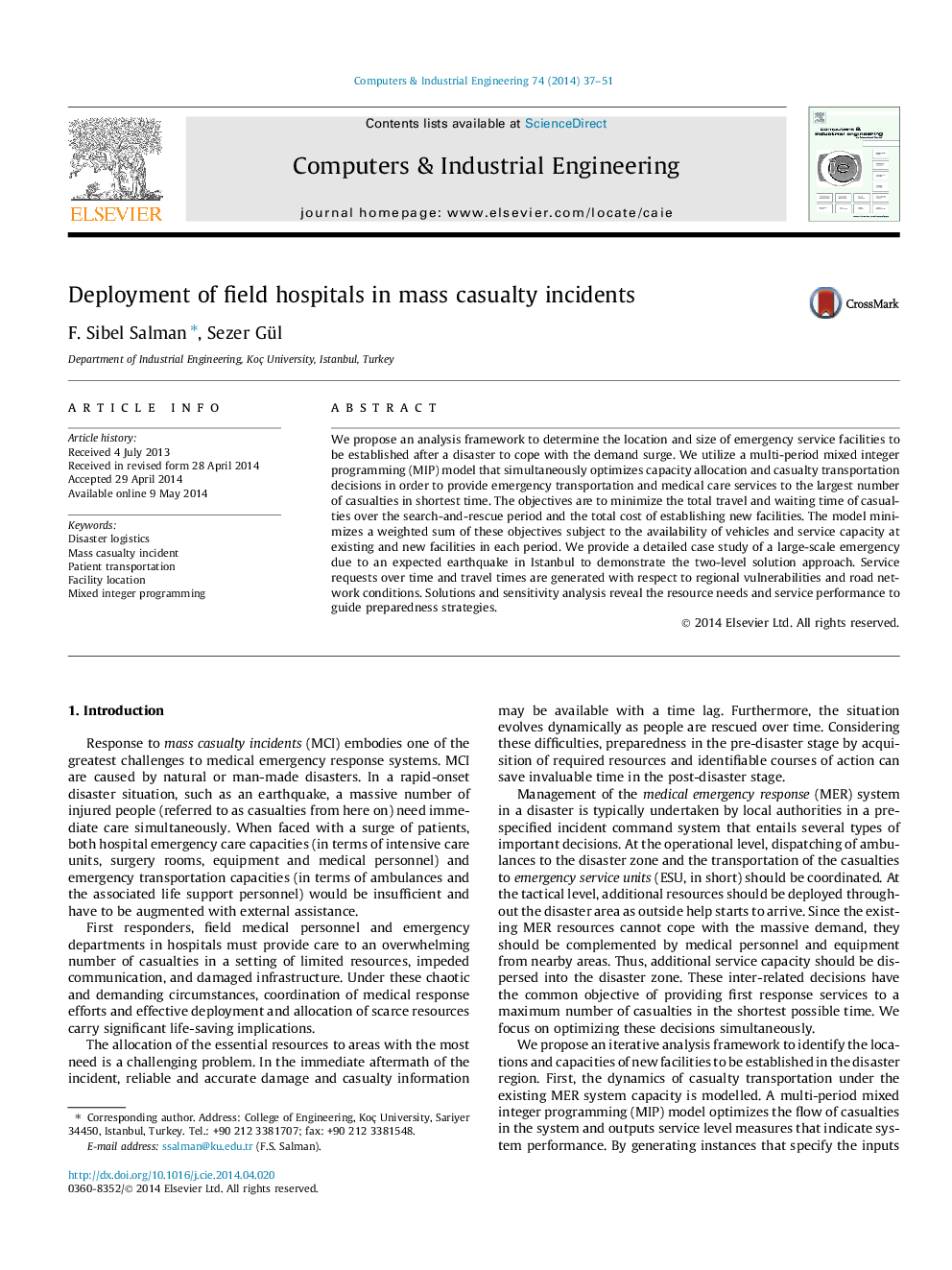| Article ID | Journal | Published Year | Pages | File Type |
|---|---|---|---|---|
| 1133898 | Computers & Industrial Engineering | 2014 | 15 Pages |
•Locating additional emergency care units in post-disaster response stage.•Transportation of casualties to hospitals and care units by ambulances.•Integrated multi-period mixed integer programming model and iterative analysis framework.•Detailed case study for expected Istanbul earthquake.
We propose an analysis framework to determine the location and size of emergency service facilities to be established after a disaster to cope with the demand surge. We utilize a multi-period mixed integer programming (MIP) model that simultaneously optimizes capacity allocation and casualty transportation decisions in order to provide emergency transportation and medical care services to the largest number of casualties in shortest time. The objectives are to minimize the total travel and waiting time of casualties over the search-and-rescue period and the total cost of establishing new facilities. The model minimizes a weighted sum of these objectives subject to the availability of vehicles and service capacity at existing and new facilities in each period. We provide a detailed case study of a large-scale emergency due to an expected earthquake in Istanbul to demonstrate the two-level solution approach. Service requests over time and travel times are generated with respect to regional vulnerabilities and road network conditions. Solutions and sensitivity analysis reveal the resource needs and service performance to guide preparedness strategies.
